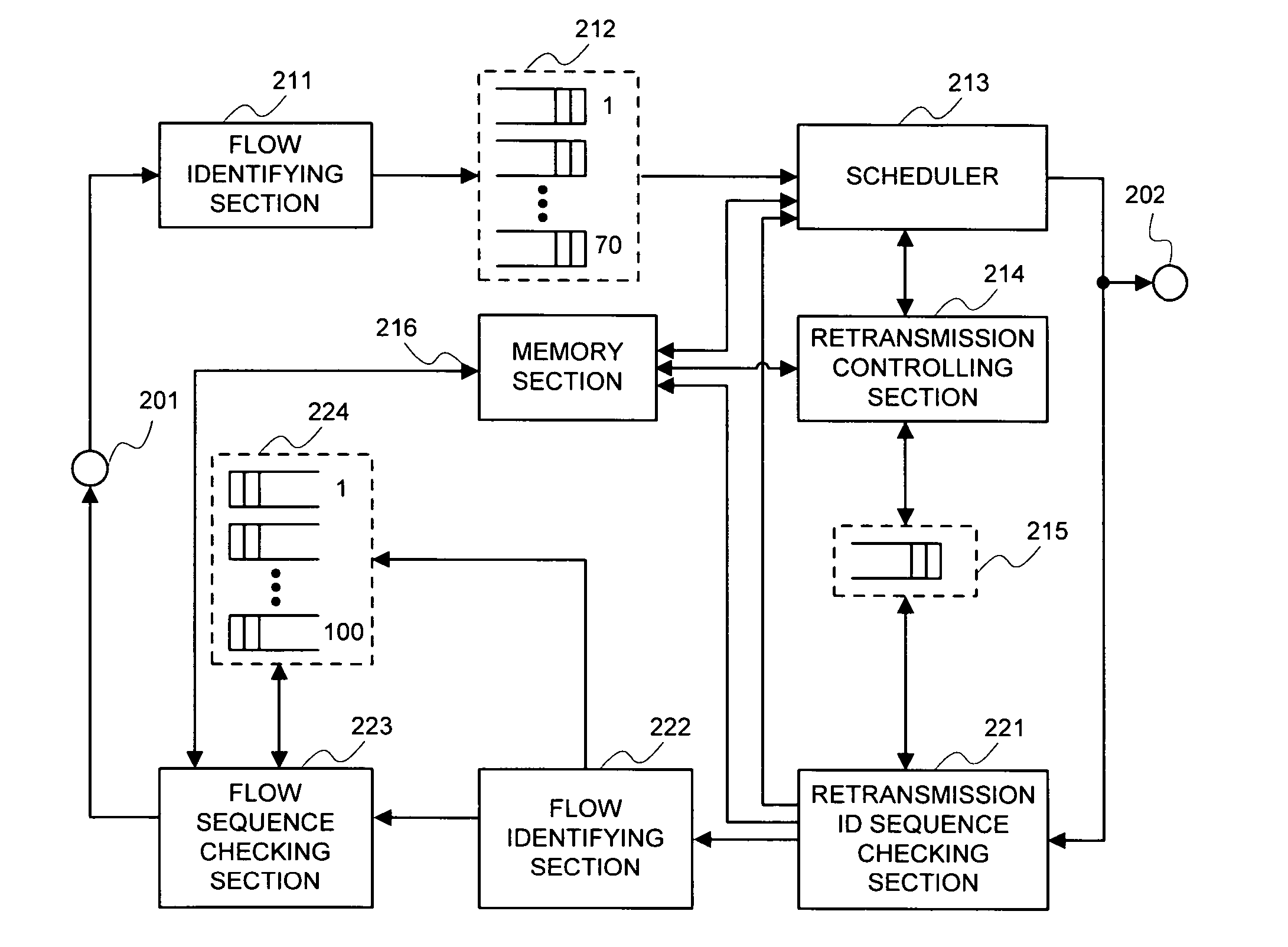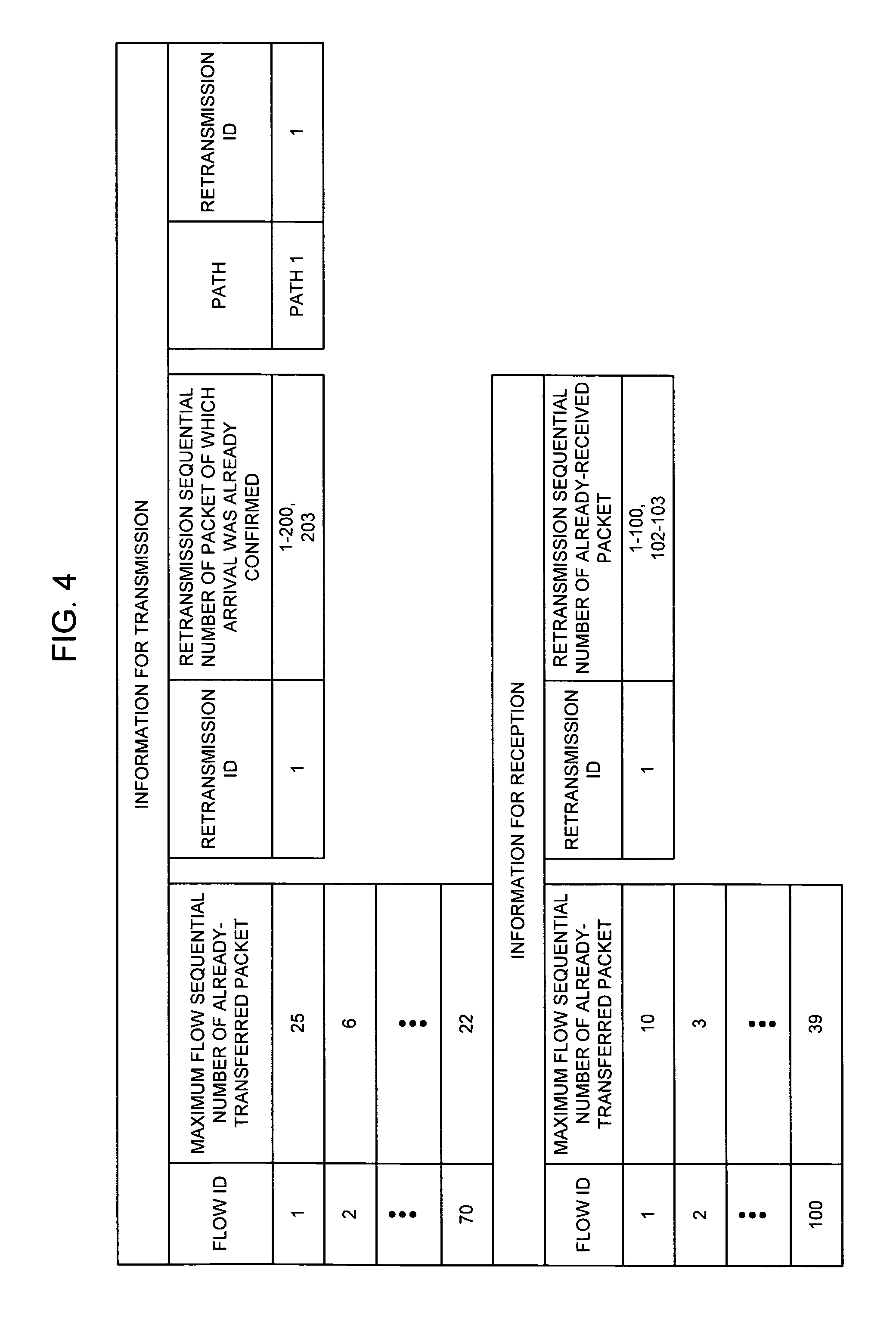Communication method
a communication method and packet technology, applied in the field of packet communication, can solve problems such as packet loss and packet sequence error, and achieve the effect of no wasteful latency tim
- Summary
- Abstract
- Description
- Claims
- Application Information
AI Technical Summary
Benefits of technology
Problems solved by technology
Method used
Image
Examples
embodiment 1
[0171] The embodiment 1 of the present invention will be explained.
[0172] In the embodiment 1, a case where the transmitting node and the receiving node are connected via one path will be explained.
[0173] Upon making a reference to FIG. 1, the embodiment 1 of the present invention is comprised of a transmitting node 101, a receiving node 102, and a path 110 for making a connection between the nodes. The path 110 is a packet communication network such as an internet. Additionally, both of the communication, which is made to the receiving node 102 from the transmitting node 101, and the communication, which is made to the transmitting node 101 from the receiving node 102, can be considered. For a convenience of explanation, the nodes are named as a transmitting / receiving node respectively; however their functions are identical.
[0174] Next, a configuration of the transmitting node 101 will be explained.
[0175]FIG. 2 is a view illustrating the configuration of the transmitting node 1...
embodiment 2
[0228] The embodiment 2 of the present invention will be explained.
[0229] In the embodiment 2, a case will be explained where there exist a plurality of the paths for connecting the transmitting node and the receiving node.
[0230]FIG. 5 is a configuration view in a case where there exist a plurality of the paths for connecting the transmitting node and the receiving node.
[0231] Upon making a reference to FIG. 5, the embodiment 2 is comprised of a transmitting node 301, a receiving node 302, and M paths 312-1 to 312-M for making a connection between the nodes. Each of the paths 312-1 to 312-M is a packet communication network such as an internet. The so-called case where a plurality of the paths, i.e. M paths exist is a case where both of the transmitting node 301 and the receiving node 302 or one of them hold a plurality of communication interfaces. For example, it is a case where either the transmitting node 301 or the receiving node 302 has M communication interfaces, or a case ...
embodiment 3
[0249] The embodiment 3 of the present invention will be explained.
[0250] The embodiment 3 is fully identical to the embodiment 2 in terms of an arrangement of the nodes and a functional configuration of the node; however only a process is different of deciding the retransmission ID for the transmission packet in the transmitting node, so it will be explained below.
[0251] In the embodiment 3, the path and the retransmission ID, which do not correspond one to one, can be altered freely. Normally, in a case where a plurality of the paths are collected into a mass having one retransmission ID, there is a possibility that the arrival sequence of the packet at the moment that the receiving node receives the packet is remarkably disordered, depending upon delays of respective paths belonging to its retransmission ID, or a delay dispersion. For this, algorithm will be explained for deciding a plurality of the paths belonging to one retransmission ID such that a provability that the arriv...
PUM
 Login to View More
Login to View More Abstract
Description
Claims
Application Information
 Login to View More
Login to View More - R&D
- Intellectual Property
- Life Sciences
- Materials
- Tech Scout
- Unparalleled Data Quality
- Higher Quality Content
- 60% Fewer Hallucinations
Browse by: Latest US Patents, China's latest patents, Technical Efficacy Thesaurus, Application Domain, Technology Topic, Popular Technical Reports.
© 2025 PatSnap. All rights reserved.Legal|Privacy policy|Modern Slavery Act Transparency Statement|Sitemap|About US| Contact US: help@patsnap.com



